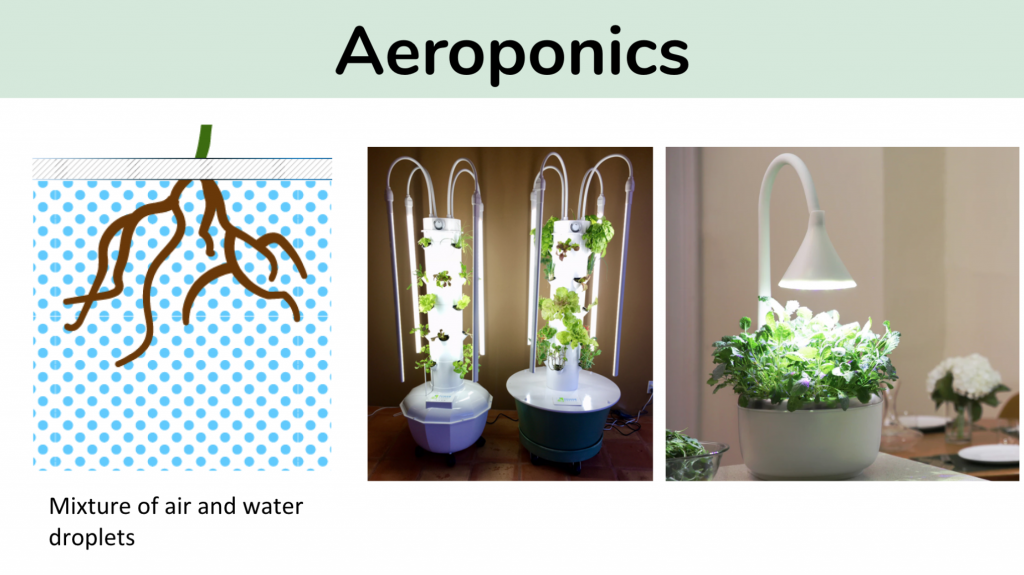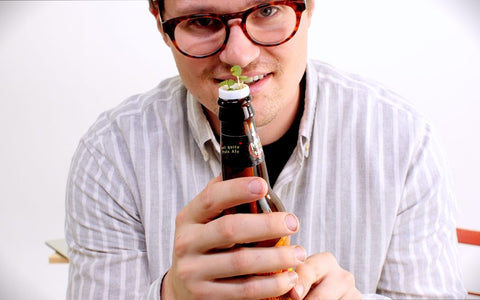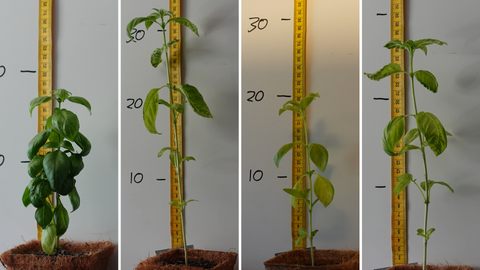Today we’re talking about an experiment which we ran to compare four of the most popular hydroponic techniques. Since these techniques are used in dozens of commercially available units, we decided to test them out for ourselves directly side-by-side to determine which is the most effective form of indoor gardening. If you’re new to hydroponics and want to learn a little bit more about the science behind the systems discussed here or how they work, check out our YouTube video which goes through each of them in detail.

The Experiment: DWC Vs Drip System Vs Aeroponic Vs Kratky Vs Soil
The test included five different systems: four hydroponics (DWC Vs Drip System Vs Aeroponic Vs Kratky) and one control sample. We ran this experiment for three months on a bench in a basement with grow lamps situated to shine directly onto the plants. Each of the five systems contained three different plants including cherry tomatoes (a model for flowering fruity plants), lettuce (a model for leafy greens), and beets (to represent root crops). All of the containers were solid opaque plastic to keep the light out of the water reservoirs and reduce the amount of aloe growth.

Check out some time lapse videos on YouTube. This post will focus on the data of the plant sizes, fruit yield, quantity of water usage, and temperature of each of the different systems.
#1: The Drip System: First, we have a drip system. The drip system uses clay pebbles to anchor the plant and delivers the water through an HTPE gardening irrigation system with three emitters. This system delivers water three times per day for 15 minutes each time.

#2: The Deep-Water Culture (DWC): Next, is the Deep-Water Culture. In this trial, the water is aerated with bubbles delivered by an aquarium tube and air stone.
#3: Aeroponics: The third system contains one ultrasonic fogger. These foggers were purchased from a specialty supplier for around $30 each.

#4: The Kratky: The fourth set-up is the Kratky: basically just distilled water and nutrients.

Issues with the Experiment: Drip vs DWC Vs Aeroponic Vs Kratky Vs Soil
There were some limitations and problems which might skew the results, including:
(1) The plants in the DWC with the bubbles died early. This wasn’t intentional, but (as we learned) the system goes through water extremely rapidly.
(2) Some of the plants were not given enough time to reach their full potential. For example, the tomato plant in the drip system grew very large but was slower to flower. Unfortunately, the experiment ended before it was given enough time for all of its flowers to fully produce fruit.
(3) Finally, there was an element of human error. Life happens and occasionally the control system wasn’t watered as a result.
Experiment Results: DWC Vs Drip System Vs Aeroponic Vs Kratky Vs Soil
What did we learn from our experiment? The most consistent and comparable data ended up being for the tomato plants, so that is the data that will be compared here.
Plant weight: The drip system grew the biggest plant, by far, but was much slower to flower. Unfortunately, because it ran out of water the Deep-Water Culture tomato plant didn’t make it to the end.
Yield: The aeroponic fog-based system produced both the largest and greatest quantity of fruit. The most surprising result was that the Kratky was the second-best in terms of fruit yield. Given the simplicity and low cost of a Kratky set-up, it punches well above its weight.

Temperature: (Remember that these were all sitting in the same room, side-by-side.) You’ll notice from the graph that the aeroponic system was very warm. This is due to the heat emitted by the electronic fogger. Meanwhile, the DWC system with the bubbler was by far the coolest because the constant evaporation of water forced by the system is an endothermic reaction that absorbs heat.
Water use: The major difference in these systems was how they related to water use. The DWC with the bubbler by far consumed the most water. The Kratky consumed the least because it’s a passive system that doesn’t really force the air out. With the aeroponics, which was quite close to the Kratky in water usage, the vaporized water is able to condense back into the system so it recirculates rather than constantly intaking new water.

Which System Was the Overall Best?
If overall cost and maintenance are not a constraint, you’re likely to get the best results from an aeroponic-based system. However, in terms of bang for your buck, ease of set-up and use, and the fact that there are no moving parts, the Krafty system is hard to beat.

Hopefully, this has been a useful overview. Don’t forget to head on over and check out our video explaining the science behind each of these four hydroponic systems.
To learn more about hydroponics, gardening, or growing your own food, don’t forget to subscribe to our YouTube channel, sign up for future emails from Urban Leaf, or leave a question in the comments below.

How’s Your Green Thumb?
Test out your plant knowledge by taking our Urban Leaf Green Thumb Certification quiz, and receive a special reward! If you pass the quiz, you’ll also receive a special certificate you can post and share with your friends!
Take the Quiz!









There are no comments for this article. Be the first one to leave a message!